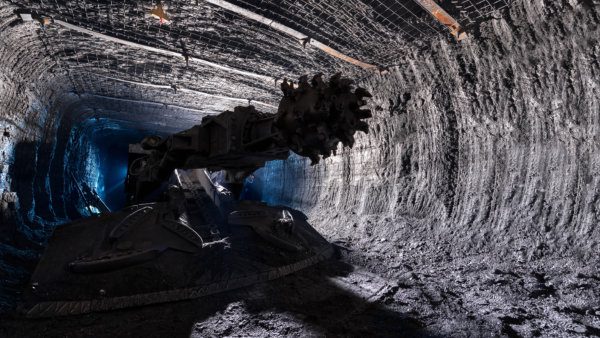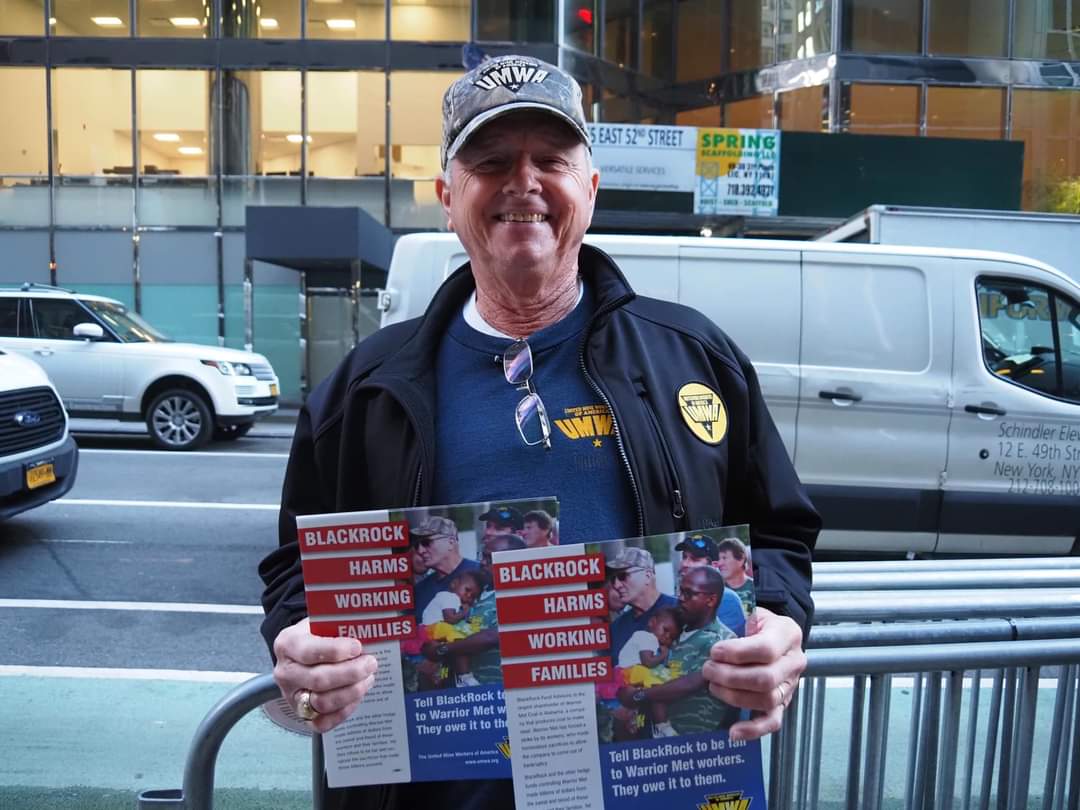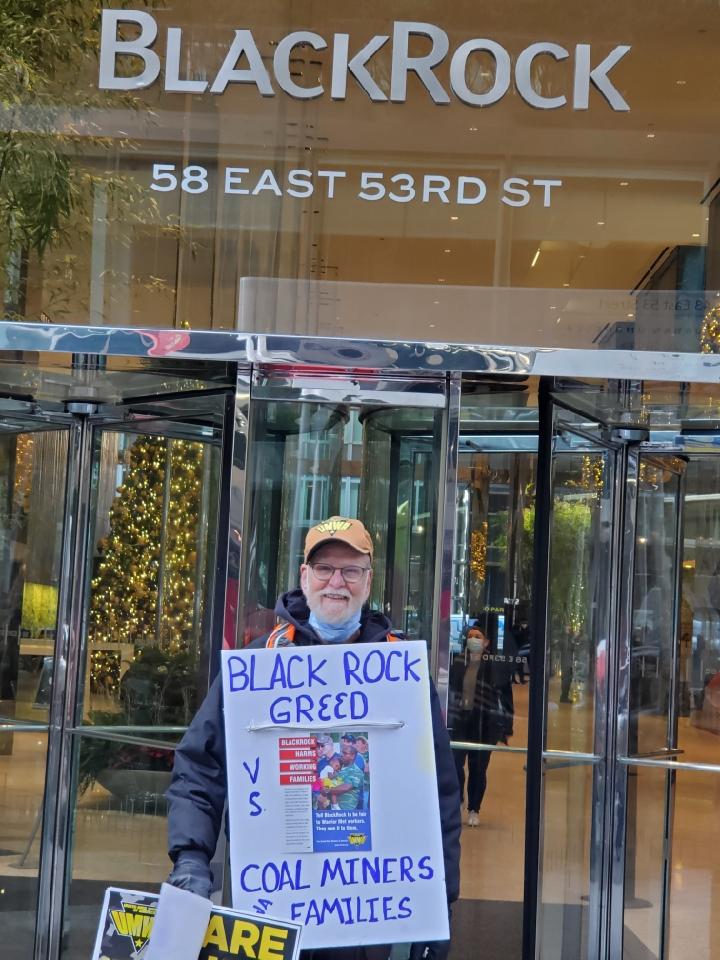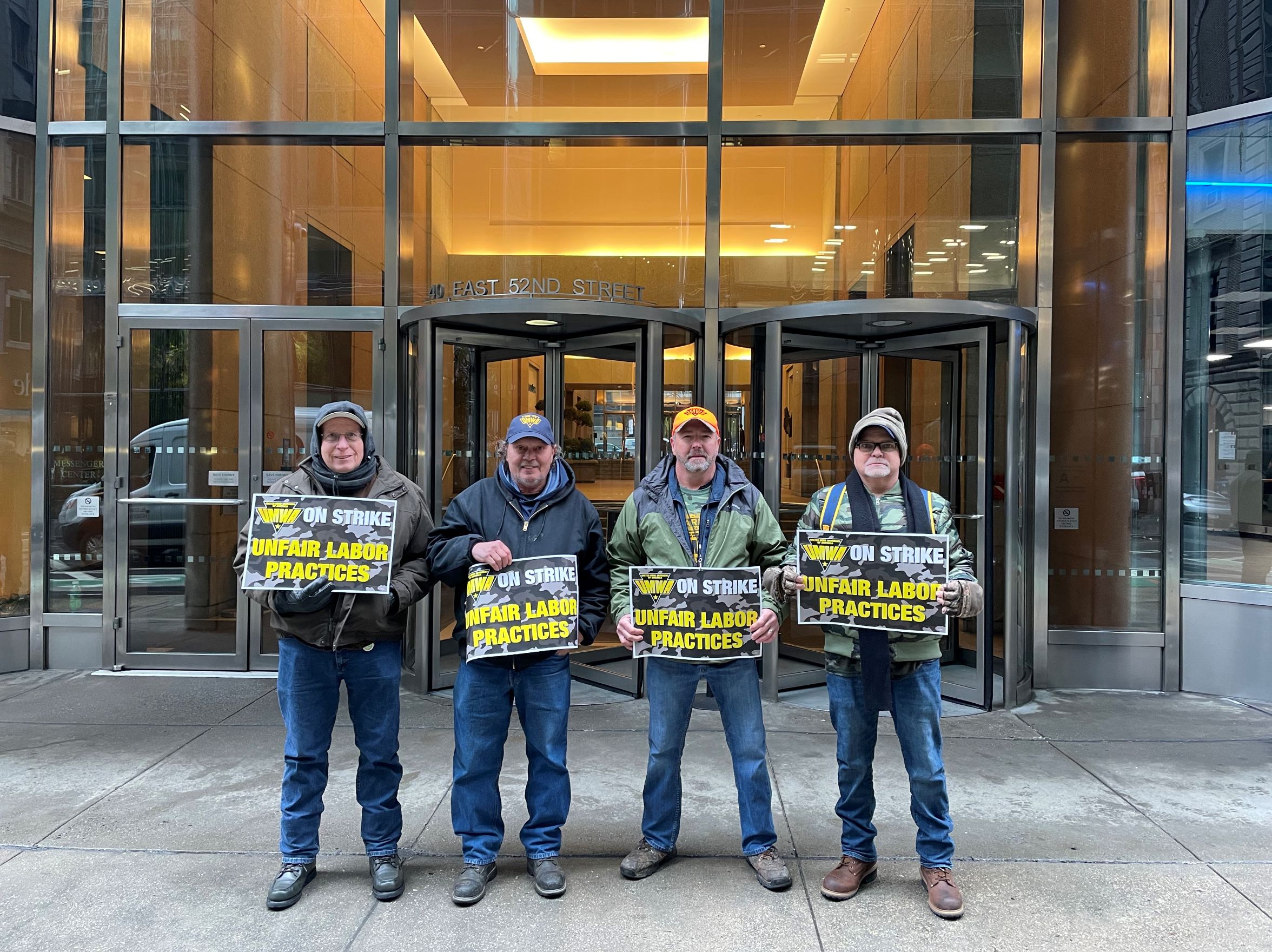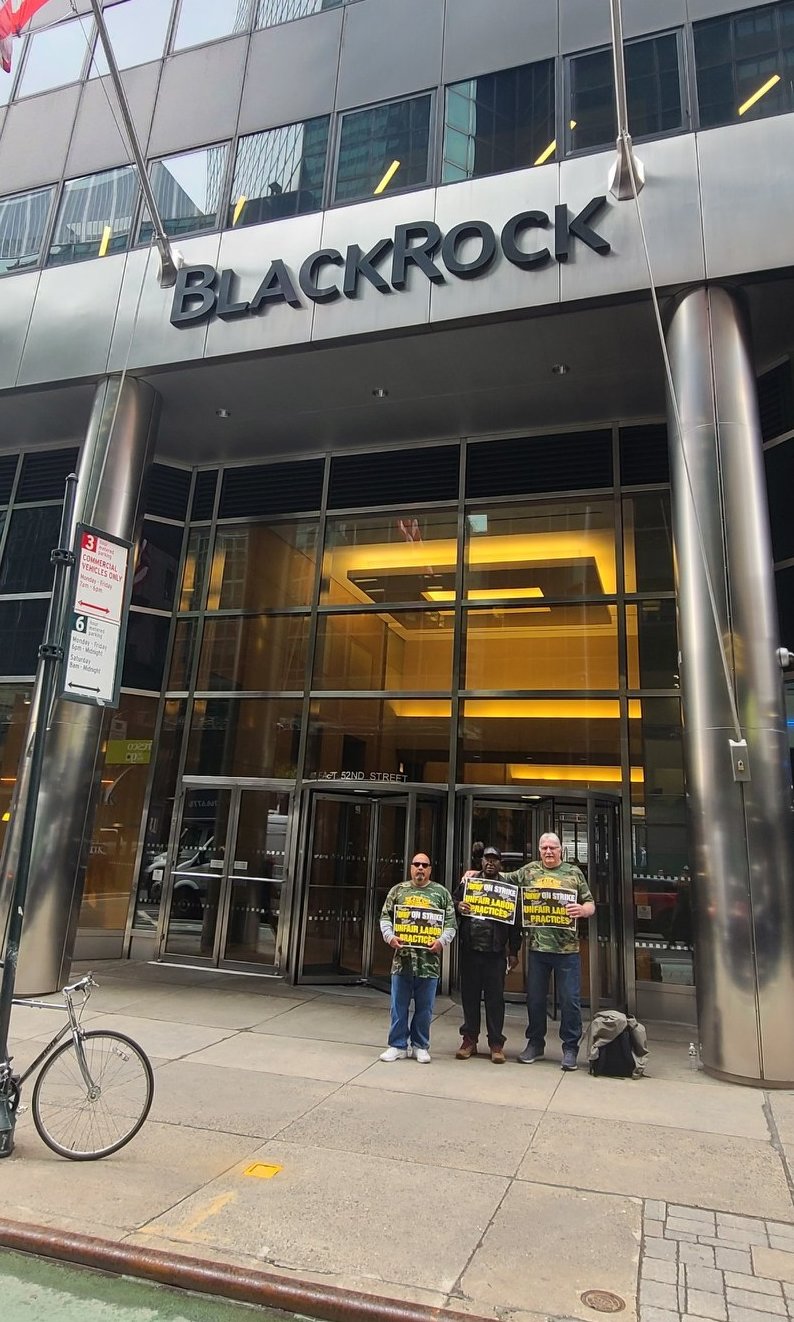July 23, 2022, marked the tenth anniversary of UMWA veterans and West Virginia Vietnam Veterans of America’s participation in the annual washing of the Vietnam Veterans Memorial Wall (The Wall).
 “We haven’t been able to participate in this annual tradition for the past two years because of the pandemic,” said President Roberts. “The majority of us who participate in this special event each year are all veterans. I know I speak for each and every one of us when I say this is one of the most honorable things we can do as veterans. For those of us who actually got to come home from Vietnam, it is a very somber experience to see the names of one of our fellow servicemen etched on the granite of the memorial wall.
“We haven’t been able to participate in this annual tradition for the past two years because of the pandemic,” said President Roberts. “The majority of us who participate in this special event each year are all veterans. I know I speak for each and every one of us when I say this is one of the most honorable things we can do as veterans. For those of us who actually got to come home from Vietnam, it is a very somber experience to see the names of one of our fellow servicemen etched on the granite of the memorial wall.
“This year makes it a little more special because we haven’t been able to be here for the last few years,” Roberts said. “When we come here, I think we all say a little prayer for the men and women’s names who are on The Wall, and we all thank God that we were afforded the opportunity to return home to our families. Coming here is just a small token of our way of paying our respects to all those who lost their lives and never returned home.”
The Vietnam Memorial Wall includes the names of over 58,000 servicemen and women who gave their lives in service in the Vietnam conflict. The memorial includes the Vietnam Veterans Wall, the Three Servicemen statue, and the Vietnam Women’s Memorial. It is the most visited memorial on the National Mall, attracting more than five million people each year.
The inscription on the wall reads, “In memory of the men and women who served in the Vietnam War and later died as a result of their service. We honor and remember their sacrifice.”
On January 21, 1970, Jan Scruggs was having his morning cup of coffee, but he was anywhere but in his kitchen at home. He was in Vietnam serving in the 199th light infantry brigade. In the nine months since he had been there, he had seen a lot of action. He had been wounded during battle, spent three months recovering in a hospital, and was sent back to fight with rocket-propelled grenade fragments permanently embedded in his body. 
On that January day, there was a big explosion and Scruggs ran over to see a truck on fire and a dozen of his friends dying. They had been unloading an ammunition truck when the explosion occurred. Scruggs never forgot that horrific scene and never forgot his friends.
In 1979, Scruggs conceived the idea to build the Vietnam Veterans Memorial as a tribute to all those who served during one of the longest wars in American history. He felt the memorial would serve as a healing device for those who visited the memorial. Scruggs launched his vision with $2,800 of his own money and gradually gained support from other Vietnam veterans in persuading Congress to provide a prominent location on federal government property in Washington, D.C.
Congress eventually responded, and the site was chosen on the National Mall near the Lincoln Memorial. Scruggs is the president of the Vietnam Veterans Memorial Fund, Inc., and was able to raise $8.4 million. The memorial was completed in just two years.
It was dedicated on November 13, 1982, during a weeklong national salute to Vietnam veterans in the nation’s capital. The Vietnam Veterans War Memorial Fund works with the National Park Service to preserve and maintain The Wall.
March 2022, marked the 40th anniversary of the groundbreaking ceremony of the Vietnam Veterans Memorial. Since The Wall was dedicated back in 1982, more than 400,000 items have been left by visitors as remembrances and tributes. The National Park Service collects, catalogs, and preserves these items as part of the Vietnam Veterans Memorial collections with curatorial support over the years from the Vietnam Veterans Memorial Fund.
 In a public statement about the anniversary, he said that he thought the memorial helped bring the nation together and helped people recover from the war, adding that The Wall became a platform for exchanging views without the vitriol that the controversial conflict had stoked.
In a public statement about the anniversary, he said that he thought the memorial helped bring the nation together and helped people recover from the war, adding that The Wall became a platform for exchanging views without the vitriol that the controversial conflict had stoked.
As part of the 40th-anniversary commemoration, an in-person Reading of the Names ceremony will take place at the memorial site beginning on November 7, 2022.
For 65 hours over a four-day period, each of the 58,281 names on The Wall will be read aloud by thousands of volunteers. The names will be read in the same order they are inscribed on The Wall—by date of casualty.

 The impact on the national economy was immediate. Coal prices doubled as production dropped. As the winter months were approaching, negotiations between the coal operators and miners proved ineffective. President Theodore Roosevelt feared that a coal shortage would result in hardship for Americans who needed heat during the winter months.
The impact on the national economy was immediate. Coal prices doubled as production dropped. As the winter months were approaching, negotiations between the coal operators and miners proved ineffective. President Theodore Roosevelt feared that a coal shortage would result in hardship for Americans who needed heat during the winter months.

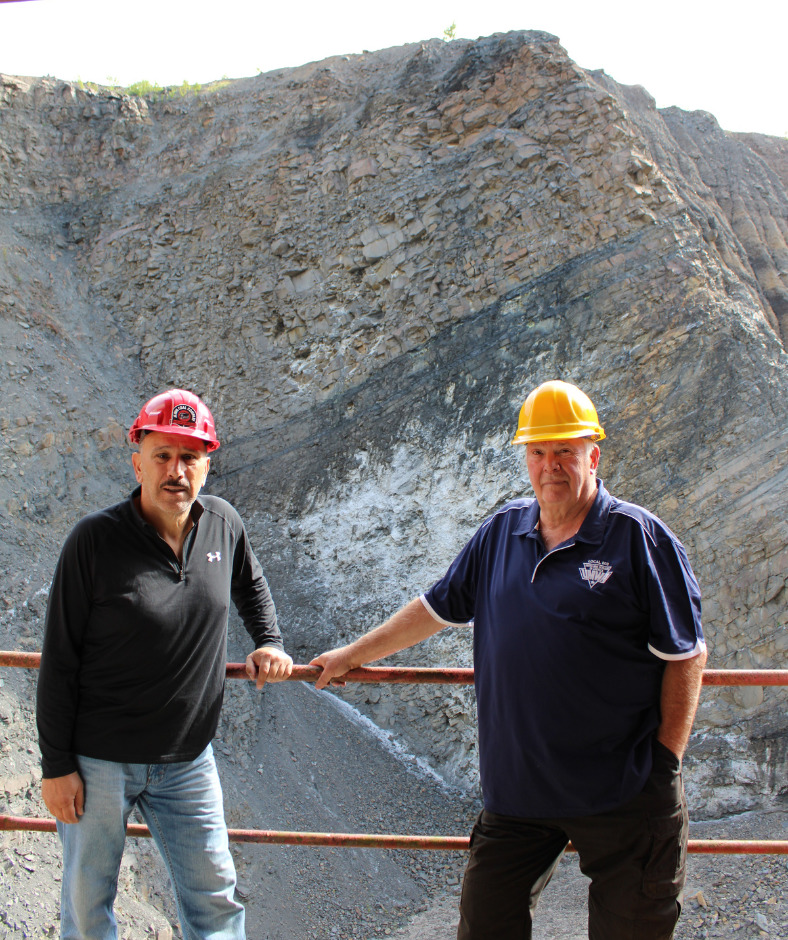 “I run the breaker from start-up to shut down. I enjoy my job, enjoy my fellow union brothers here, and I’m proud to say I am a member of the UMWA.” Financial Secretary Dave Formica has been with the company for 41 years. In addition to his duties as Financial Secretary, Brother Dave serves on the Mine Safety Committee. “My job here at Jeddo is operating a Caterpillar 992 wheel loader, which is an 814-horsepower loader,” Dave said.
“I run the breaker from start-up to shut down. I enjoy my job, enjoy my fellow union brothers here, and I’m proud to say I am a member of the UMWA.” Financial Secretary Dave Formica has been with the company for 41 years. In addition to his duties as Financial Secretary, Brother Dave serves on the Mine Safety Committee. “My job here at Jeddo is operating a Caterpillar 992 wheel loader, which is an 814-horsepower loader,” Dave said.
 “I know I can always count on my union for anything, and that’s what being in a union is all about; security, peace of mind, and knowing that someone always has your back.” Local 2587 and 10-year UMWA member Ryan Ramsey works at the mine in Centralia, Pennsylvania, and is a welder for the company. “I went to school to become a welder and got my state and federal certifications,” said Ramsey.
“I know I can always count on my union for anything, and that’s what being in a union is all about; security, peace of mind, and knowing that someone always has your back.” Local 2587 and 10-year UMWA member Ryan Ramsey works at the mine in Centralia, Pennsylvania, and is a welder for the company. “I went to school to become a welder and got my state and federal certifications,” said Ramsey.
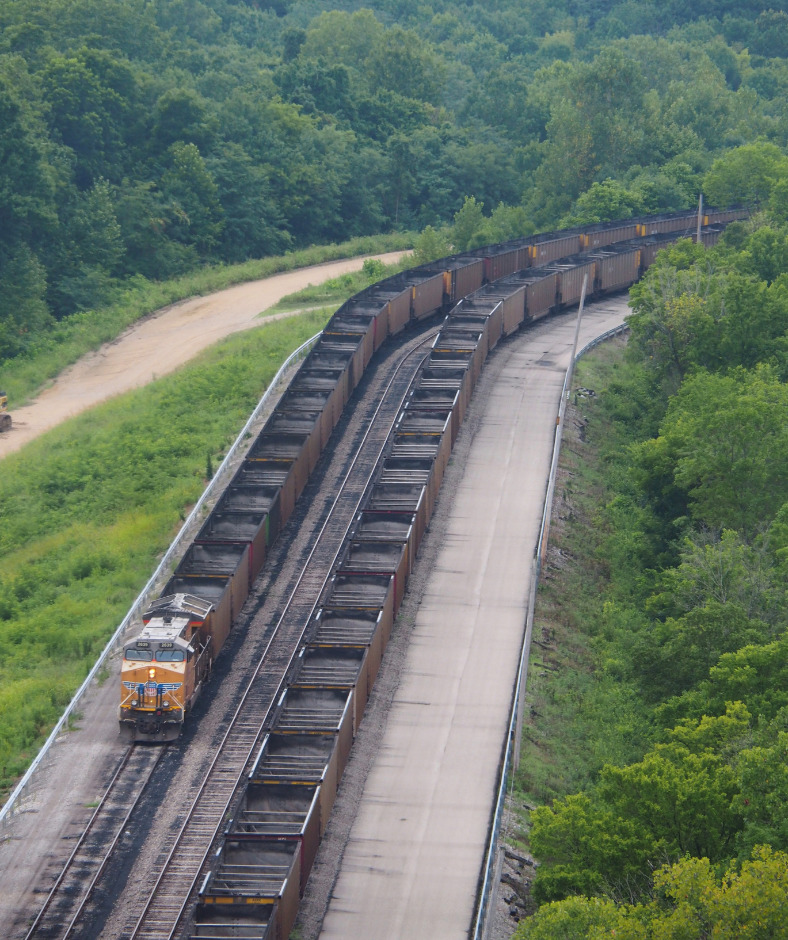 stretches across a sprawling 1,600 acres and is dubbed “America’s busiest inland terminal.” Operating seven power plants across the nation, AEP serves nearly 5.5 million customers across 11 states.
stretches across a sprawling 1,600 acres and is dubbed “America’s busiest inland terminal.” Operating seven power plants across the nation, AEP serves nearly 5.5 million customers across 11 states.

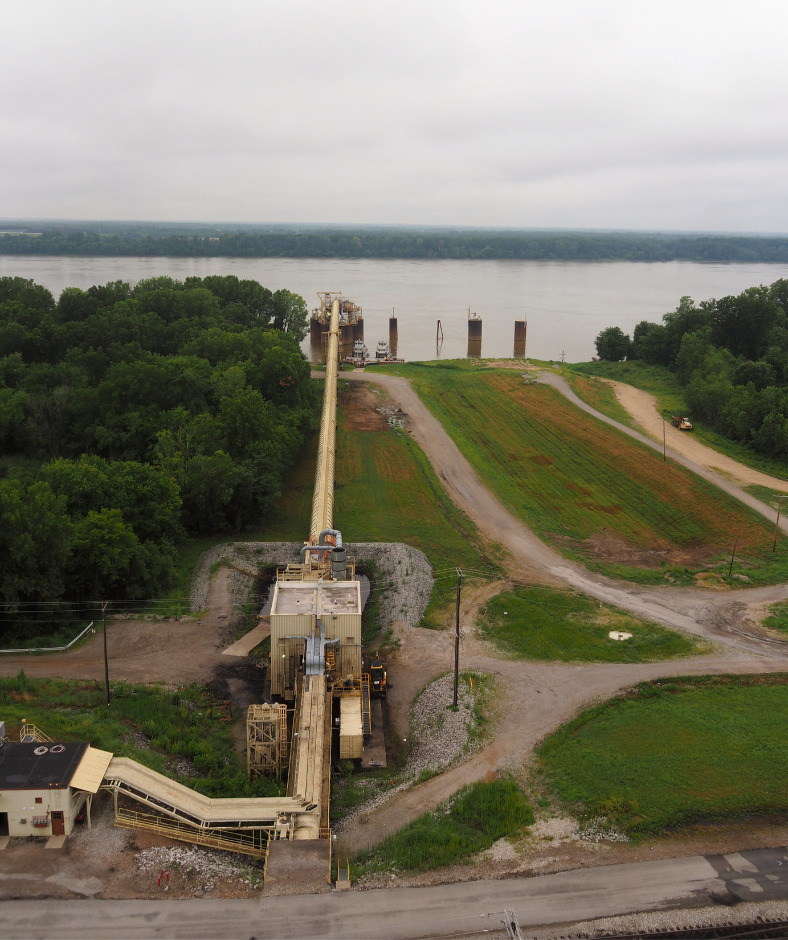
 “Our members at the coal terminal in Metropolis are very-skilled individuals,” said President Roberts.
“Our members at the coal terminal in Metropolis are very-skilled individuals,” said President Roberts.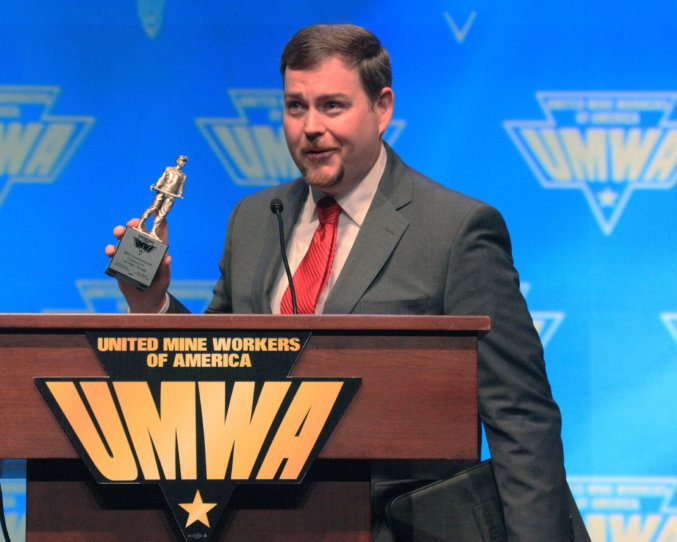

 WVU Medicine Children’s includes a heart wing named the “Cecil E. Roberts, United Mine Workers of America WVU Children’s Heart Wing”. President Roberts was born in company housing in Cabin Creek, WV. He views this contribution as the UMWA’s continued commitment to the health care of working people and their families.
WVU Medicine Children’s includes a heart wing named the “Cecil E. Roberts, United Mine Workers of America WVU Children’s Heart Wing”. President Roberts was born in company housing in Cabin Creek, WV. He views this contribution as the UMWA’s continued commitment to the health care of working people and their families.
 The union had agreed to a settlement of charges in June 2022, to save members and families from days of hostile questioning and arguments by company lawyers. The cost of that settlement was expected to be close to $400,000, based on what NLRB Region 10 told the UMWA’s lawyers. But that’s not what happened. The damages assessed in the July 22 letter came to an incredible $13.3 million.
The union had agreed to a settlement of charges in June 2022, to save members and families from days of hostile questioning and arguments by company lawyers. The cost of that settlement was expected to be close to $400,000, based on what NLRB Region 10 told the UMWA’s lawyers. But that’s not what happened. The damages assessed in the July 22 letter came to an incredible $13.3 million.



 Abbey Ferguson is the daughter of Local Union 2397 member Johnathan Pridemore in District 20. “As any member or child of a member of the UMWA knows, life is hard,” said Abbey. “My father was one of the many coal miners who has recently gone on strike at Warrior Met Coal.”
Abbey Ferguson is the daughter of Local Union 2397 member Johnathan Pridemore in District 20. “As any member or child of a member of the UMWA knows, life is hard,” said Abbey. “My father was one of the many coal miners who has recently gone on strike at Warrior Met Coal.” Jasmine Caldwell is the granddaughter of Local Union 1810 member Randy Dillon in District 31. “I think one of the most important issues the organized labor movement faces is right-to-work laws,” said Jasmine. “Union numbers have been decreasing for years and some legislation is making it harder for unions to gain funds to be able to operate.”
Jasmine Caldwell is the granddaughter of Local Union 1810 member Randy Dillon in District 31. “I think one of the most important issues the organized labor movement faces is right-to-work laws,” said Jasmine. “Union numbers have been decreasing for years and some legislation is making it harder for unions to gain funds to be able to operate.”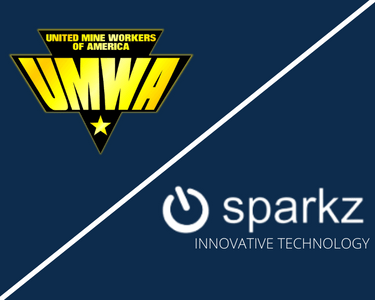
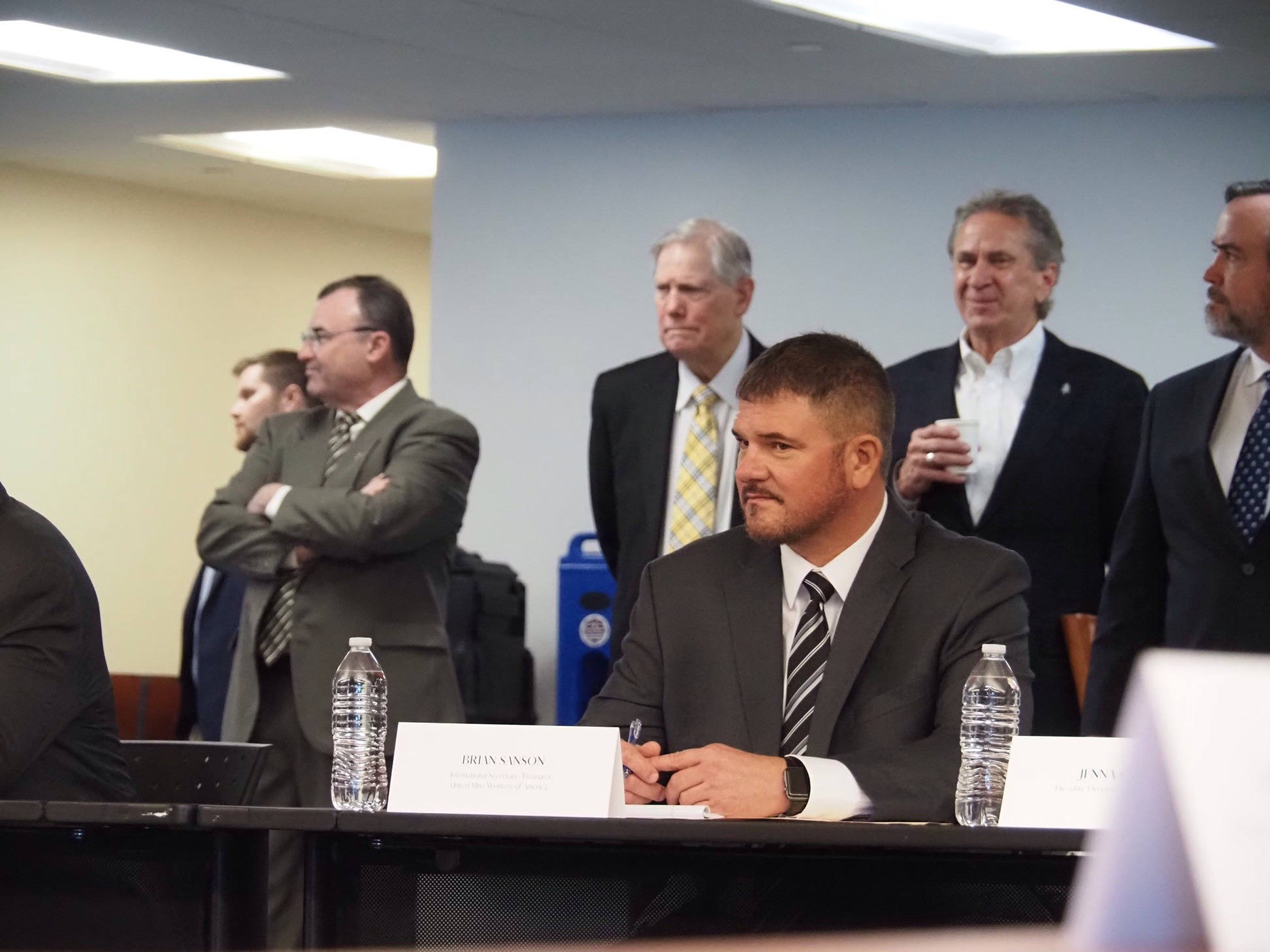

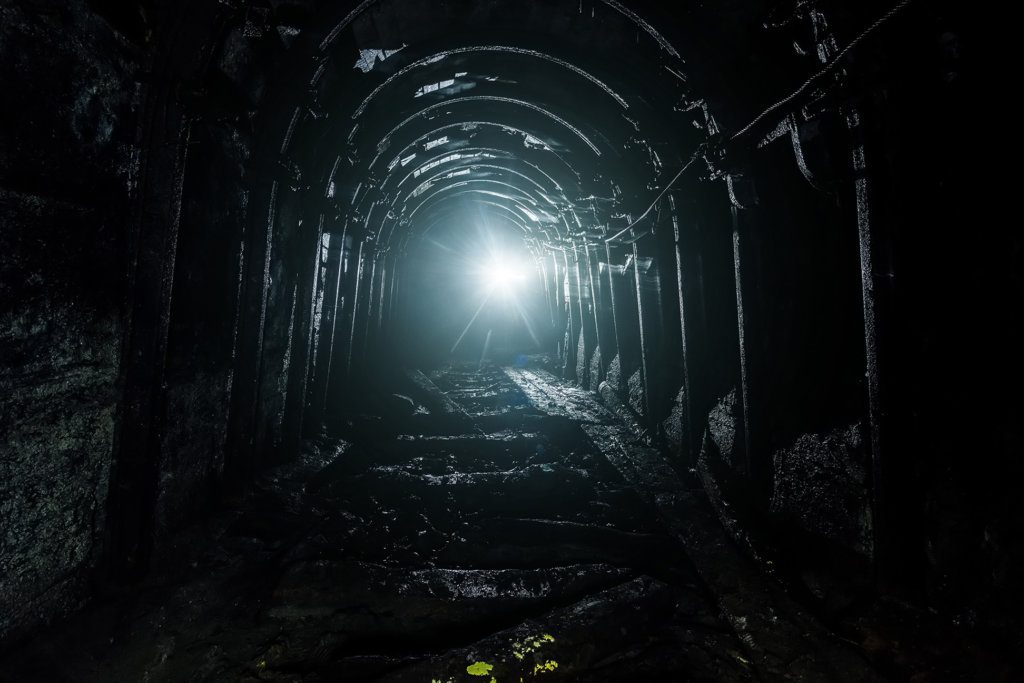
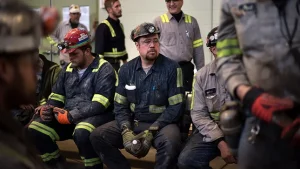 The bill is a result of many years of work from Representative Bobby Scott (D-VA), and Representative Matt Cartwright (D-PA), who first introduced the bill in December, 2021.
The bill is a result of many years of work from Representative Bobby Scott (D-VA), and Representative Matt Cartwright (D-PA), who first introduced the bill in December, 2021.